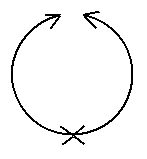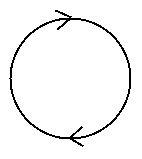A Rotating Pendulum
When the initial energy of a realistic pendulum is increased,
it can be made to just about turnover and stop. If given enough energy,
it will reach the top and keep rotating. One way to visualize this
with sound is to play a tone and have the frequency of the tone
vary with time as does the pendulum's height above equlibrium position.
When the pendulum is at the top we will hear the highest frequency, when it's
at the bottom the frequency will be lowest.
 Pendulum with just about enough energy to reach the top. (150k)
Pendulum with just about enough energy to reach the top. (150k)
Again, the frequency of the sound is proportional to the height above
equlibrium position and you should be able hear how the pendulum stops (the
change in frequency becomes zero) on its way up and the falls back.
 Pendulum with more than enough energy to reach the top. (150k)
Pendulum with more than enough energy to reach the top. (150k)
Again, the frequency of the sound is proportional to the height above equlibrium
position, but this time you should hear how the pendulum only slows down
(the rate of frequency change decreases) as it move upwards.
In order to make the sonifications easier to distinguish, we could add a little
tic to the soundfile every time the pendulum passes its highest and/or
lowest point. This leads us to the problem of how to record
events like atoms decaying or particles being scattered in a soundfile.
 Back to the sound page
Back to the sound page
 Pendulum with just about enough energy to reach the top. (150k)
Pendulum with just about enough energy to reach the top. (150k)  Pendulum with more than enough energy to reach the top. (150k)
Pendulum with more than enough energy to reach the top. (150k)  Back to the sound page
Back to the sound page